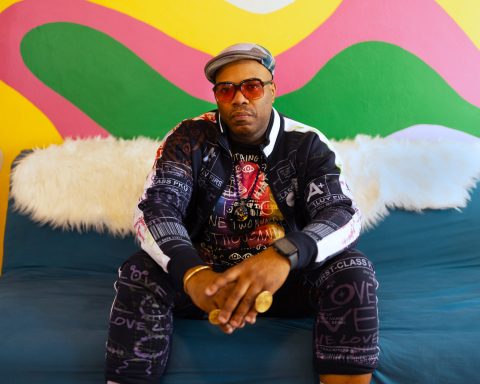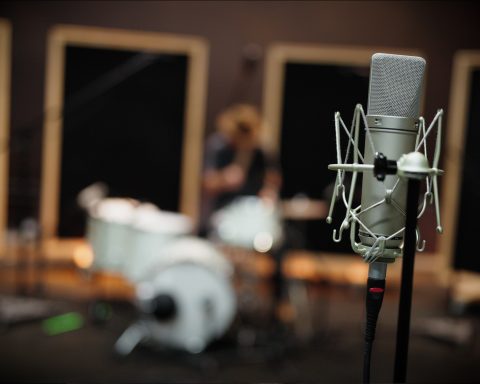The dynamic between a producer and drummer in the studio is one of the most vital elements of the recording process. Knowing how hard to push a player—inspiring and challenging them—requires a unique skill set. All the better when a producer is also a drummer. Such is the case with Butch Vig, who, in addition to shaping the sound of era-defining classics by Nirvana, Smashing Pumpkins, and L7, is no slouch on the kit himself. Give a listen to his playing on Garbage’s many alternative rock hits.
Abe Cunningham, a veteran basher with a deep pocket, has drummed for Sacramento’s dreamy nu-metal kings Deftones since 1995. In an exclusive conversation, this pair of percussive powerhouses wax eloquent about the ease of playing and tweaking sounds within the Roland V71 module, studio history, and why it all starts with the drummer.


Where Memories Are Made
“This old battle axe,” Butch Vig says, gesturing to the vintage mixing board behind him. “I recorded Nevermind by a little band named Nirvana on this console at Sound City. It’s a truly unique Neve.” Vig is speaking from Dave Grohl’s Studio 606 in Northridge, wearing a loose, collared overshirt and his trademark thick glasses. His look is lowkey, but the casual comment about the mixing desk is evidence of Vig’s pivotal role in developing alternative rock.
He’s at Studio 606 today to track Deftones drummer Abe Cunningham using the new Roland V71 module. “I got to torture Abe for three or four hours recording some bitchin’ grooves,” Vig declares and high-fives Cunningham mid-sentence, underlining their easy rapport.
Serious Fun
Vig and Cunningham take their roles as musical timekeepers seriously and have industry accolades aplenty. Still, even with decades of packed arenas and hit albums between them, each fondly recalls his formative years. “I got a cool ’60s Ludwig drum kit. I would come home from school, race home with my buddies, and we would start jamming,” Vig remembers.
The Wisconsin-raised Vig caught the rock bug early on and it never let go of him, taking the young musician into clubs before he’d even graduated high school. “When I was 16 and 17, we would play these little taverns out in the middle of nowhere.” Music remains an ongoing obsession, and he wouldn’t have it any other way. “Even now, I have side bands—I’m constantly making music.”
Although a few years younger than Vig, Cunningham has his own visceral recollection of his childhood salad days. “We started in our guitarist’s mom’s garage, and summertime in Sacramento was hot, hot, hot,” he remembers. “She would come to do the laundry, and the drums were next to the dryer. We were in this little one-car garage, and it was 120 degrees in there.”
While his story works as an amusing anecdote about rock and roll aspiration, it’s also a metaphor for being in the hot seat today at Studio 606, pounding away on the Roland VAD716. “It’s tough being a drummer,” Cunningham says, “but it’s also the best job in the world.”
The Player and the Room
The pair jumps from topic to topic, and their shared experiences and reference points color the conversation. Quickly, the subject turns to an age-old question: When recording drums, what is most important, the sound of the drums, the player, or the sound of the room?
“I think it’s all intertwined,” Cunningham posits, leaning deeply back in his chair, black baseball cap in place. “You’ve got to set it to forget it and let it go. It’s really who you’re doing it with and just being able to relax and trust.”
Vig concurs. “You hit the nail on the head. But primarily for me as a producer, it starts with the drummer. Because a good drummer, whether playing an acoustic kit or playing V-Drums, understands the song and figures out how to fit in what they’re doing to make the song the best thing it can be.”
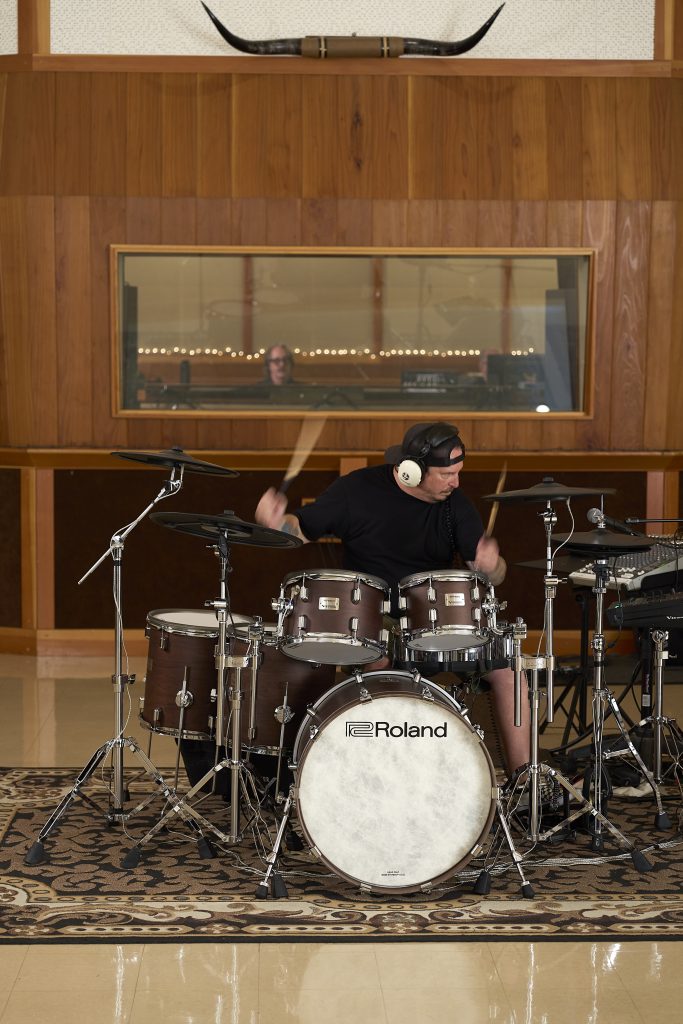
“It's tough being a drummer, but it’s also the best job in the world.”
Abe Cunningham
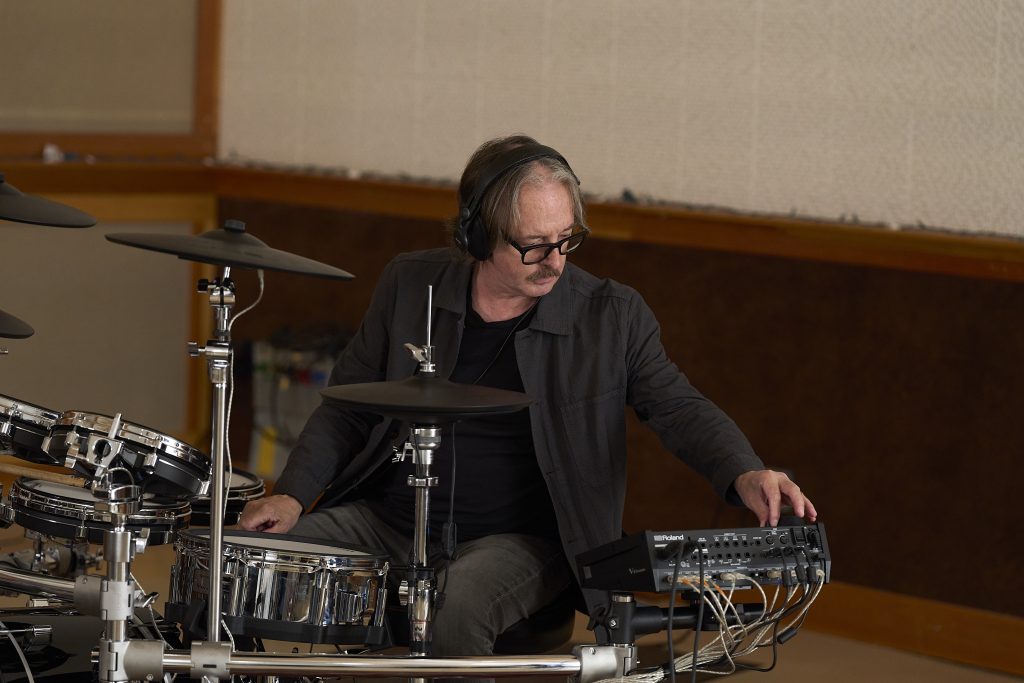

V-Drums Vets
Both Cunningham and Vig have lengthy histories with V-Drums. “I got my first V-Drums kit in 1999 when we were trying to write what became our third record, White Pony,” recalls Cunningham. “I had been hearing about them coming out, and I was like, ‘I’ve got to get one of these.'” The continual refinement of V-Drums made an impression on him over years of Deftones releases and tours. “What a journey. And the growth in these units—it’s good stuff, man.”
As for Vig, he’s always worked with electronics as a producer and behind the kit. “Garbage has always been a real techie band, and I used to use drums to trigger samples, sound effects, loops, and things, and it worked.” Still, his early system had some kinks, which, coupled with vocalist Shirley Manson’s desire for lower stage volume, led him to take a plunge into a full Roland V-Drums setup.
“After Strange Little Birds, I decided I want to explore going completely V-Drums because of two things: I wanted to utilize the technology in terms of the sound of the kit and bring the sound way down.” The results have exceeded his expectations, right up to today’s session, when Vig spends some time behind a TD716. “I have not looked back since I started playing them,” Vig affirms.
Dialing it In
Considering their backgrounds with V-Drums and the longstanding relationship between Vig and Cunninghan, how did the V71 slot into the day’s creative process? “I was in capable hands,” Cunningham says. “There was definitely some twiddling. The beauty of this unit is it’s user-friendly. You lose yourself in there and start messing. Today, it was instant. And we just barely scratched anything on this.”
As for Vig, he stresses the fun factor of the pair scouring the V71 module for sounds. “There’s hundreds of killer, totally custom kits in there already.”
Cunningham elaborates on the benefits of the modules’s rich tweakability. “When you started recording, we tweaked a lot of stuff. We worked on the kick and the snare and started changing the pitch to make the drums and cymbals fit in the track in terms of what the guitars would be.”
A New Ambience
While the acoustics of the Studio 606 drum room didn’t factor into today’s recording session the way it would with a traditional kit, Vig found the V71 module had its own sonic stamp. The results were big, punchy, and dramatic.
“We ran everything through the Neve, then brought it up through the big speakers,” he explains, before showering Cunningham with some of his trademark excitable producer spirit. “You started, and it was like you were playing a live kit. It sounded crushing in here.”
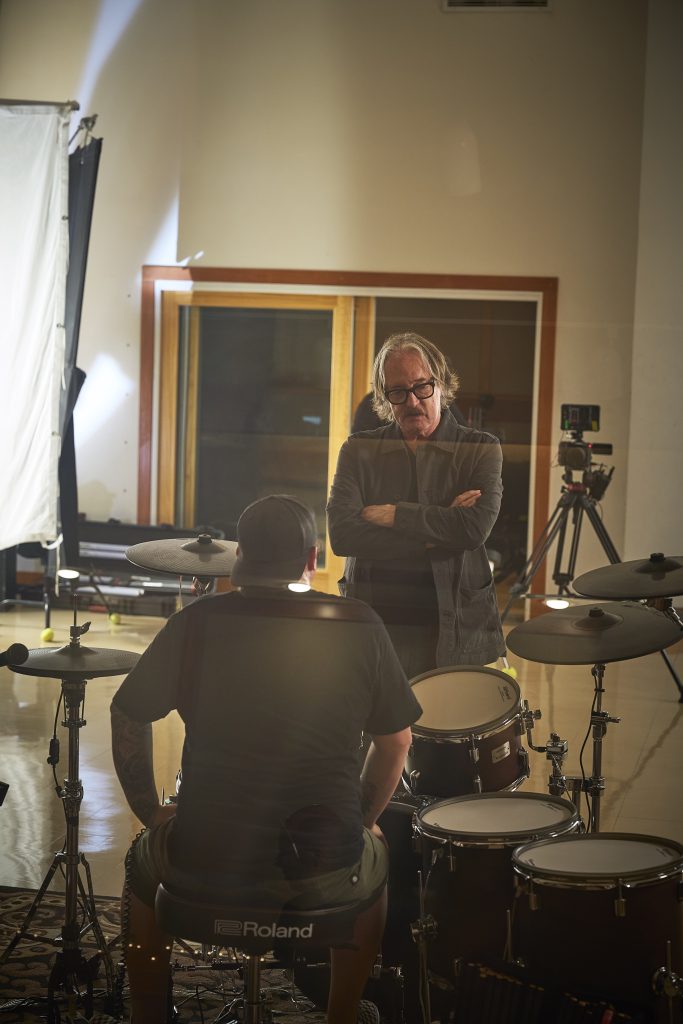
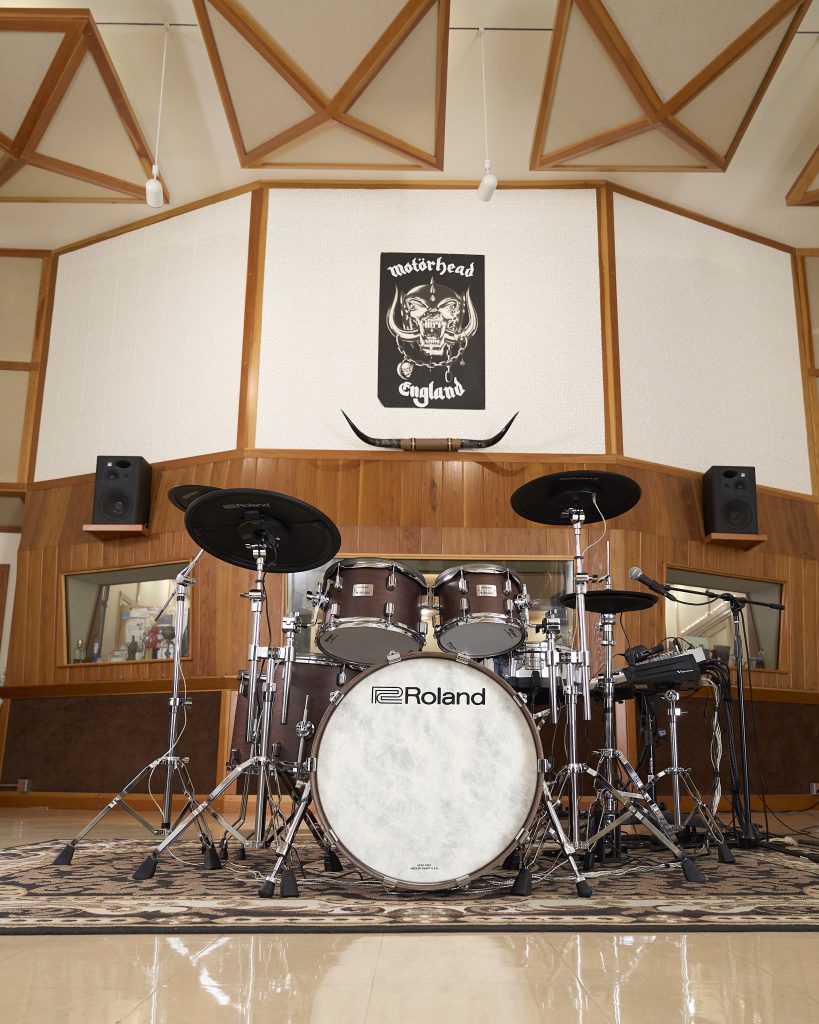
A firm futurist, Vig appreciates that some of the atmospheric room magic is baked into the new V71 kits; a few even have a familiar ring for him. “One of the things I’ve noticed about the new software is that some of the ambiance in the new kits, especially the legacy kits, sounds reminiscent of Sound City.”
A Heralded Room
It’s easy for both Cunningham and Vig to wax poetic about the magic of studios, and Studio 606 is quickly becoming iconic in its own right. “It feels really good to be here working with you,” Vig says. “Dave designed it based on ABBA’s Polar Studio. He got an ABBA photo book, gave it to some of the engineers, and they built a proper studio based on that design.”
Cunningham agrees that the studio has a unique, storied vibe. “It’s got a very homey feel,” he says. “It’s obviously designed insanely well, but it was put together by a bunch of dudes just knocking it out, you know?”
He also acknowledges a more profound layer of meaning here, a direct line between today’s session and the past players who’ve tracked in the space. “This is a heralded drum room with you, Dave, and, of course, Taylor, and this.” Cunningham lays his hand on the console. “For a couple of drummers to be here in this room, it’s very special.”



